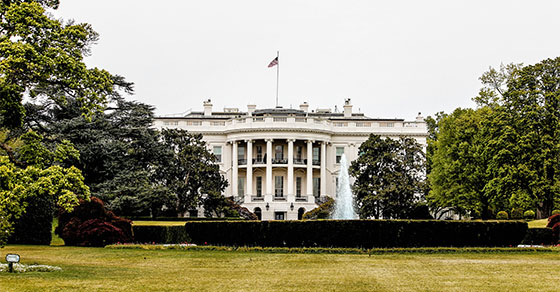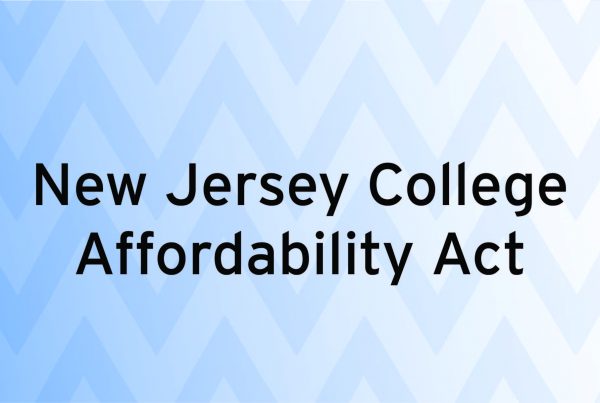On Friday, March 27, 2020, the President signed the Coronavirus Aid, Relief and Economic Security (CARES) Act into law. It is one of the largest pieces of “recovery legislation” with 2.2 trillion dollars’ worth of benefits. It is also quite a large piece of legislation in terms of length—some 880 pages worth, courtesy of the Senate. Needless to say, there is quite a bit to digest.
Here are some of the highlights of the Law affecting BUSINESS taxpayers directly:
PROVISIONS AFFECTING BUSINESSES
Employee retention credit for employers
This provision provides a refundable payroll tax credit for 50% of wages paid by eligible employers to certain employees during the COVID-19 crisis. The credit applies to wages paid after March 12, 2020 and before December 31, 2020.
– The credit is available to employers, including non-profits, whose operations have been fully or partially suspended as a result of a government order limiting commerce, travel, or group meetings. The credit is also provided to employers who have experienced a greater than 50% reduction in quarterly receipts, measured on a year-over-year basis. The credit is not available to employers receiving Small Business Interruption Loans under Sec. 1102 of the Act.
– Wages paid to which employees? For employers who had an average number of full-time employees in 2019 of 100 or fewer, all employee wages are eligible, regardless of whether the employee is furloughed. For employers who had a larger average number of full-time employees in 2019, only the wages of employees who are furloughed or face reduced hours as a result of their employers’ closure or reduced gross receipts are eligible for the credit. (Act Sec. 2301(c)(3)(A))
No credit is available with respect to an employee for any period for which the employer is allowed a Work Opportunity Credit with respect to the employee.
Wages. The term “wages” includes health benefits and is capped at the first $10,000 in wages paid by the employer to an eligible employee.
– Wages do not include amounts taken into account for purposes of the payroll credits, for required paid sick leave or required paid family leave in the Families First Coronavirus Act, nor for wages taken into account for the Code Sec. 45S employer credit for paid family and medical leave.
– Other. IRS is granted authority to advance payments to eligible employers and to waive applicable penalties for employers who do not deposit applicable payroll taxes in anticipation of receiving the credit.
Delay of payment of employer payroll taxes
The CARES Act allows taxpayers to defer paying the employer portion of Social Security taxes through the end of 2020. This becomes effective on the date the Act is enacted by the President’s signature.
– Employers will ultimately have to pay the deferred Social Security taxes over two payments. Half of the deferred amount will be due December 31, 2021 with the other half due December 31, 2022.
– Deferred taxes paid by the due dates will be considered timely if made by the 2021 and 2022 adjusted due dates.
– The above rules won’t apply to any taxpayer which has had indebtedness forgiven under Act Sec. 1106 with respect to a loan under Small Business Act Sec. 7(a)(36), as added by Act Sec. 1102, or indebtedness forgiven under Act Sec. 1109.
– In addition, for purposes of individuals required to make estimated tax payments for any tax year which includes any part of the payroll tax deferral period, 50% of the self-employment taxes imposed for the payroll tax deferral period won’t subject to estimated tax payment rules.
Temporary repeal of taxable income limitation for net operating losses (NOLs)
Under the Jobs Cut and Jobs Act of 2017, the amount of the NOL deduction was equal to the lesser of (1) the aggregate of the NOL carryovers to such year and NOL carrybacks to such year, or (2) 80% of taxable income computed without regard to the deduction allowable in this section. Thus, NOLs are currently subject to a taxable-income limitation and can’t fully offset income.
The CARES Act temporarily removes the taxable income limitation to allow a 2018 NOL to fully offset income. This applies to tax years beginning after Dec. 31, 2017, and to tax years beginning on or before Dec. 31, 2017, to which NOLs arising in tax years beginning after Dec. 31, 2017 are carried. Any corporate NOL incurred for 2018 may be carried forward to 2019 and used without the previous 80% limitation.
Modification of rules relating to net operating loss (NOL) carrybacks
The CARES Act provides that NOLs arising in a tax year beginning after Dec. 31, 2018 and before Jan. 1, 2021 can be carried back to each of the five tax years preceding the tax year of such loss. This is applicable for NOLs arising in tax years beginning after December 31, 2017.
– This will allow corporate taxpayers with 2018 net operating losses to carryback the loss to each of the previous five tax years to allow refunds of previously paid tax
Modification of limitation on losses for noncorporate taxpayers
The CARES Act temporarily modifies the loss limitation for noncorporate taxpayers so they can deduct excess business losses arising in 2018, 2019, and 2020. This change applies to tax years beginning after December 31, 2017.
Deductibility of interest expense temporarily increased
Under prior law, The Tax Cuts and Jobs Act of 201(TCJA) generally limited the amount of business interest allowed as a deduction to 30% of adjusted taxable income. The CARES Act temporarily and retroactively increases the limitation on the deductibility of interest expense under Code Sec. 163(j)(1) from 30% to 50% for tax years beginning in 2019 and 2020.
– Special rules for partnerships. Under a special rule for partnerships, the increase in the limitation will not apply to partners in partnerships for 2019 (it applies only in 2020). For partners that don’t elect out, any excess business interest of the partnership for any tax year beginning in 2019 that is allocated to the partner will be treated as follows:
– …50% of the excess business interest will be treated as paid or accrued by the partner in the partner’s first tax year beginning in 2020 and isn’t subject to any limits in 2020.
– …50% of the excess business interest will be subject to the limitations relating to the usual treatment of excess business interest allocated to partners, in the same manner as any other excess business interest that is so allocated. In other words, it will remain suspended until the partnership allocates excess taxable income or excess interest income to the partner (or the partnership is no longer subject to Code Sec. 163(j)).
– Elect out of the increased limitation. Taxpayers may elect out of the increase, for any tax year, in the time and manner IRS prescribes. Once made, the election can be revoked only with IRS consent. For partnerships, the election must be made by the partnership and can be made only for tax years beginning in 2020.
– Election to calculate 2020 interest limitation using 2019 adjusted taxable income. In addition, taxpayers can elect to calculate the interest limitation for their tax year beginning in 2020 using the adjusted taxable income for their last tax year beginning in 2019 as the relevant base. For partnerships, this election must be made by the partnership.
– If an election is made to calculate the interest limitation using 2019 adjusted taxable income for a tax year that is a short tax year, the adjusted taxable income for the taxpayer’s last tax year beginning in 2019 which is substituted under the election will be equal to the amount which bears the same ratio to such adjusted taxable income as the number of months in the short taxable year bears to 12.
Bonus depreciation technical correction for qualified improvement property (Finally the “fix” for Qualified Improvement Property drafting error in the Tax Cuts and Jobs Act of 2017
The Tax Cuts and Jobs Act of 2017 (P.L. 115-97, the “TCJA”) amended Code Sec. 168 to allow 100% additional first-year depreciation deductions (“100% Bonus Depreciation”) for certain qualified property. The TCJA eliminated pre-existing definitions for (1) qualified leasehold improvement property, (2) qualified restaurant property, and (3) qualified retail improvement property. A general 15-year recovery period was intended to have been provided for QI Property. However, that specific recovery period failed to be reflected in the statutory text of the TCJA. Thus, under the TCJA, QI Property falls into the 39-year recovery period for nonresidential rental property. That makes the QI Property category ineligible for 100% Bonus Depreciation.
The CARES Act provides a technical correction to the TCJA, and specifically designates QI Property as 15-year property for depreciation purposes. This makes QI Property a category eligible for 100% Bonus Depreciation. QI property also is specifically assigned a 20-year class life for the Alternative Depreciation System.
– This change is effective for property placed in service after December 31, 2017.
If you have any questions, please contact your Maillie LLP representative via phone or email.





